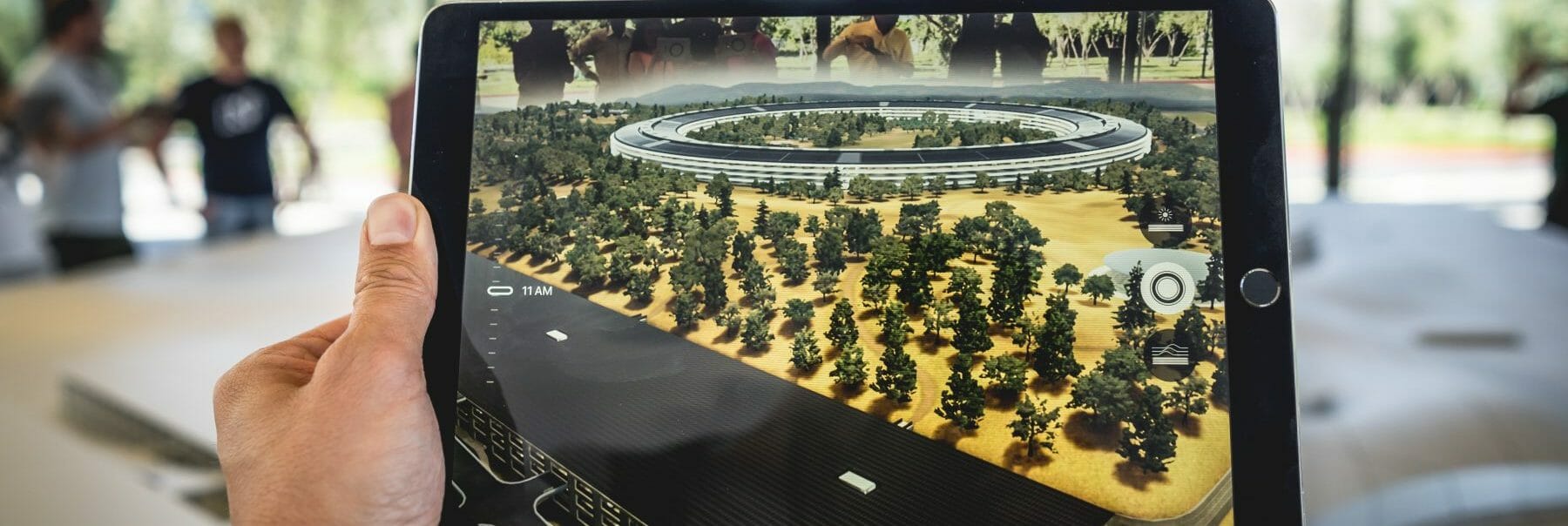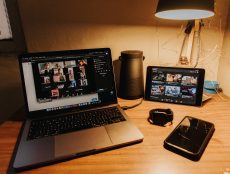
Articles
Editor’s Picks
Trends in Corporate eLearning Part 3: How Companies Use Augmented Reality Learning
By Sherman Morrison
January 22, 2019
In this four-part series about the corporate eLearning realities of virtual reality (VR), augmented reality (AR) and mixed reality (MR), I’ve been exploring both the future promise and the current state of how these digital technologies can impact the way learning and training happens in wide array of businesses. This third article in the series takes a closer look at how companies use augmented reality learning.
Just-In-Time and Real-Time Learning is the True Power of Augmented Reality
The first article of this series, Trends in Corporate eLearning Part 1: VR, AR and MR in Learning and Training, explained the difference between AR and VR. Whereas VR creates a fully digital reality in which the users is immersed and can interact with various features of the VR environment, AR is based on a real-world view that is then augmented with digital overlays to provide additional information as the user interacts with the real-world environment.
One of the most powerful ways AR can be used in business learning and training is in what can be called just-in-time learning, where users get the information they need in real-time as they need it on the job. Rather than the learning experience being separated in time or space from the performance of the job, they occur simultaneously for all intents and purposes.
The radical way this impacts some specific aspects of company operations cannot be underestimated. The primary example is maintenance and repairs, whether these are happening on-site internally to a company or by field service technicians out making service calls at client sites. Technicians outfitted with smart AR glasses can perform maintenance and repairs on models of equipment with which they are unfamiliar because the information they need will be overlaid on their view of the real-world environment.
Workers out on call could also remotely connect with a service expert back at the home office (or anywhere else in the world) who can relay information in real-time through the AR glasses as they see the same view as the worker, superimposing diagrams, markings and messages as the work is being performed. While it’s impossible for any given technician to be an expert on every piece of equipment in their field, this kind of just-in-time AR learning makes it a non-issue. When new equipment is introduced, companies won’t have to take the time to retain their entire technical workforce – they will only need to update their AR training programs. With that in mind, below are examples of how companies use augmented reality learning:
Honeywell Uses Augmented Reality to Train Industrial Employees
When multinational conglomerate Honeywell realized the deep impact that a rapidly retiring manufacturing workforce (to the tune of 50-55% over the next five years) could have in terms of lost knowledge and expertise, it kicked its AR training program into high gear. The Millennials who will end up filling these positions want to learn what they need when they need it, so AR learning is the logical choice to capture the expertise of retiring workers and pass it on to the next generation through a format they want. Another advantage to the company’s use of AR training is that keeping a grounded connection to the real world, such as through the use of AR glasses, means workers don’t experience the dizziness that sometimes affects those immersed in a fully VR environment for extended periods of time. Is it effective? The company is very pleased to see knowledge retention rates in the 70-80% range even three months later thanks to the benefits of this learning-by-doing approach.
CISCO Uses AR Technology for Installations and Service
Technology giant CISCO Systems makes and sells networking hardware, telecommunications equipment and other high-tech products. Its use of AR overlays superimposed on actual physical devices allows technicians to see what they need to do when installing various parts. This use of AR learning-on-the-job has eliminated the need to ever read manuals, which has resulted in a 20% increase in installation efficiency and a highly impressive first-time installation accuracy rate of 90%.
Lockheed Martin Uses AR App for On-Ship Naval Maintenance Tasks
One of the challenges on the naval ships that Lockheed Martin builds and/or outfits with maritime systems and technologies when they’re at sea is the availability of information for maintenance tasks. The naval engineers who have to do the maintenance are very young (18-20) and have been trained on many of the procedures only once or twice. If they need assistance on a particular maintenance task, they have to go in search of a 100-page manual which is inevitably located somewhere on another deck of the ship. But with the company’s AR app and viewer, these engineers can easily call up a hologram of the equipment in question and have it right there in their field of vision off to the side of their real-world view, as well as guidance by video or audio for step-by-step instructions to complete the task. Needless to say, maintenance procedures are completed in much more timely fashion than before.
Perhaps the most important potential outcome of how companies use augmented reality learning is found in their potential to boost worker productivity. Productivity was growing by 2.7% each year from 2001-2007. Then the Great Recession came along and worker productivity has only grown by 1.1% from 2008-2016. But now that AR learning is catching on in the ways described above, more companies will be able to experience first-hand what has been discovered by previous applications: “Test programs where workers use AR headsets to view step-by-step instructions for complicated assembly work—instead of referring to a desktop computer or paper manual—routinely show productivity gains of between 20% and 35%.”
In the next and final article of this four-part series about corporate eLearning realities, I’ll take a look at what’s happening with mixed reality (MR) in workplace learning and training as it is the youngest of the three realities to appear in the corporate eLearning landscape.









No Comments